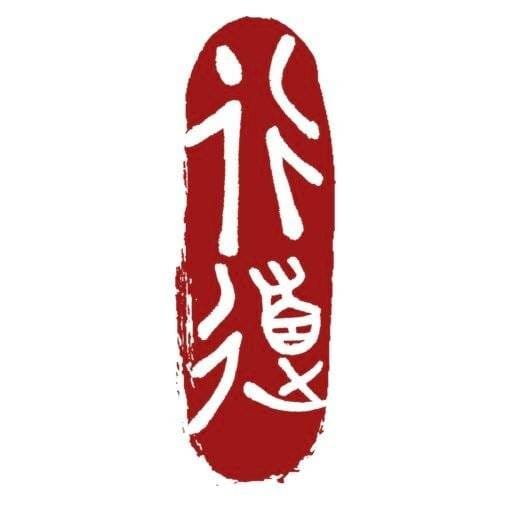Picture: John Humphris and Cathy Okada, Nishinomiya 1989.
A tribute to my late Grandad.
by Cathy Okada. Originally shared 11.04.2024
During lockdown in late 2019, a family member revealed a cool fact of my family ancestry- we are descendants of Mototsugu (Goto) Matabei, a fierce samurai warrior, general in Toyotomi Hideyoshi’s army and recognised as one of the greatest spearmen in Japan at the time. That was a pretty interesting discovery! Of course I told everyone who would listen.
However, the inspiration for this article comes from a less likely familial source. My paternal grandfather, John Humphris. A humble man from Birmingham in the UK midlands. He passed away a couple of weeks ago on Good Friday at the age of 87. Whilst reminiscing, I got thinking about some of our conversations about gardening. He didn’t know what I was on about when I would say “That’s like Aikido!”.
Grandad was a head-gardener for various Heritage gardens. Amongst many roles and achievements, he was President of the Professional Gardener’s Guild, Associate of Honour with the Royal Horticultural Society and founder of the PGG Three-Year Traineeship in Horticultural Practices. He received a Victoria Medal of Honour for his contributions to the field.
After retiring from active professional gardening, the work he continued included advising gardening students, and helping to place them on their equivalent of uchi deshi training, which he was doing right up until his final months of life. I remember him talking of the drop-out rate amongst gardening students. He said that people don’t really realise what this level of gardening involves. They think of the glamorous side- pruning roses and harvesting lovely lavender. They don’t think of the endless weeding, clearing, soil prepping, and getting out there in all different types of weather. Tough on the body and rough on the hands. Sound familiar? The endless shikko, suburi and ikkyo. Washing your dogi, cleaning the dojo. All part of the training.
A couple of years ago I remember him cutting up an apple from his garden for me to try. We both had a piece and he said “absolutely amazing”. And it was! It wasn’t even a “perfect” apple- we’d cut out a bit that had been nibbled by insects, and yet it was perfect all the same. I suppose what is really amazing is not only the physical work that went into it, but the mercy of nature; the sun, the rain, the slugs. We do what we can, we put in the work, we don’t make excuses but we can recognise what forces are within our control, and what is not. We do our best to let go of the latter.
Think of some of the fruit in the big UK supermarkets. They always look so perfect and promising, but taste them and they can be dry and lacking in flavour. Cultivated at speed for commercial viability and selected on outward appearance.
We see this in Aikido, do we not? Flashy, flamboyant, choreographed movements, and stylised, “pretty” ukemi. Often I have found that when it comes to training hand to hand with some of the same people it can feel empty, missing real connection and lacking in juice or flavour. Generally unexciting- in my opinion. Is this what happens when we don’t do the real work? When we skip the messy or even boring bits and avoid pain and struggle?
I recognise my experience as an Aikido teacher is limited having started teaching recently, but I had been a teacher of music for going on 12 years. At the risk of sounding cheesy, I suppose being a teacher is a bit like being a gardener. You create the best possible environment for growth. You nurture, you feed, you do what you can. There will always be factors out of your control- the student’s home life, work life and then the student themselves. Temperament, emotions, physical disposition, mindset. The student has to do their bit. I sometimes think about the excuses people make for themselves when it comes to their practice. Some legitimate, but some just not wanting to take responsibility for their own training, looking outside of themselves. It’s always someone else’s fault.
Grandad contracted polio as a young child and eventually lost all the muscles in one of his legs. He used a stick for as long as I remember, eventually crutches, and then callipers too. Yet I never heard him make any excuses for himself. Plus he still kept gardening! Perhaps that’s why I always saw him as a big, strong guy, both when I was a child but also as an adult. Right up until a few months before he passed away I was offering him help to carry a few things from the car to his house. His response was- “How do you think I manage it when you aren’t around, Cath?”. He was proud, but more than that- it was a strong sense of- we all have to stand on our own two feet. Not to say he rejected help when he really needed it, but he wouldn’t take the easy way out when he knew something was within his means. Even if it took him 5 minutes to do the 15 or so metres between his car and the house.
Maybe this is how we Aikidoka must approach our practice. In fact, not just Aikidoka, but all kinds of practitioners, walking their own various chosen paths. Do all we can for ourselves, do all we can for others, embrace the struggle, don’t take shortcuts and don’t complain as we put in the real work. If all of that is not already too much to ask, we should also love the journey deeply, and just maybe we will get to taste a few delicious apples along the way.

